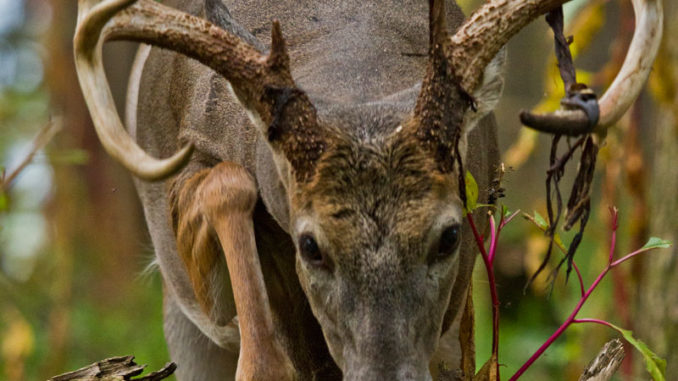
Wildlife Management Areas provide South Carolina hunters with plenty of opportunities.
The Wildlife Management Area program is one of most-highly used services of the S.C. Department of Natural Resources by hunters across the state of South Carolina.
According to SCDNR formation, the WMA program encompasses approximately 1.1 million acres of land scattered throughout the state. The funds generated by the sale of WMA permits enable SCDNR to lease land for wildlife conservation and management. Land leases can change from year to year, so it’s essential that all outdoorsmen check the annual regulations and maps for specific WMA locations.
Hunters of deer and turkey top the list in terms of overall usage, but dove hunters have around 45 different managed dove fields on WMAs. There is also exceptional waterfowl hunting on areas specifically managed for waterfowl. Depending on the WMA, hunters can find ideal habitat for a lot of small-game species such as squirrel, rabbit, quail, woodcock and other species including grouse, bear, hogs and coyotes.
Whitetail Deer
According to Charles Ruth, deer and turkey project supervisor for the SCDNR, deer hunting is one of the most prevalent uses of WMA lands on a statewide basis.
“There are a couple of reasons for this popularity, with one being some huge chunks of land in the national forests that are available to hunters though the WMA programs,” Ruth said. “The Francis Marion National Forest in the Lowcountry, with a quarter million acres, as well as three separate and large chunks of the Sumter National Forest in the piedmont and mountains provides hunters with large areas to hunt deer and other species. Many deer hunters prefer to have a large amount of land to hunt. Some choose to hunt along the easy-to-reach places, but for those willing to go deep and get away from the majority of hunters, there can be some exceptional deer hunting.”
The statewide deer harvest last year was 10.7 deer per square, but on public land, there’s evidence that it might have been higher.
“In the Central Piedmont Hunt Unit, with the Sumter Nation Forest being a big chunk of this area, there were 15.7 deer per square mile harvested, an extremely good harvest rate,” Ruth said. “Hunters in the Western Piedmont Hunt Unit harvested deer at the rate of 11.6 deer per square mile. Again, this is very good, and actually, the statewide rate is very good when compared to many other areas.”
Ruth said a second reason deer hunting is so popular is that some areas are specifically managed for good deer hunting, and some of these areas are hunted by a drawing from those who apply for specific hunts.
“Some of the very best draw-hunt areas include the Webb Center, Hamilton Ridge, Donnelley, Bear Island and Bonneau Ferry to name a few specific ones,” Ruth said. “These and a few other WMAs are hunted via a draw-hunt process that takes place earlier in the year, and this program gets high response from hunters because of the quality of hunting. I’d advise hunters to begin planning for those areas for the 2015 season; applications are usually out by July each year. Since the hunting is limited in terms of amount allowed, the harvest per square mile may not be as high as some, but pressure over the course of the entire season is less because it’s limited to specified hunts only to ensure quality hunts on these areas.”
Ruth added that based on the 2013 harvest, some other WMAs along the coast that had good numbers included Botany Bay with a 21.8 deer per square mile. Oak Lea WMA had a 19.6 deer per square mile rate, and Cross Generating Station had a 13.7 deer per square mile rate.
Wild turkey
Turkey hunters also like larger tracts when looking for hunting acreage, and when it comes to WMAs, big is often better — at least in some eyes.
“Excellent hunting exists on some of the smaller areas, at least in terms of gobblers available to hunt,” Ruth said. “The problem sometimes is there’s a lot of competition for these birds. That’s why a lot of hunters will hunt the large WMAs, so they can get in deep and away from many other hunters. Also, they continue to hunt all season, because after the first week or two, a lot of the pressure will dwindle; that’s an occurrence not just on WMAs but statewide.
Doves
South Carolina hunters have a great opportunity for 45 or more managed fields. According to Willie Simmons, small-game project supervisor, each of these fields has direct management input by the SCDNR.
Pending approval by the S.C. Natural Resources Board and the U.S. Fish and Wildlife Service, the 2014-2015 mourning dove season in South Carolina will be Sept. 1-6 (afternoons only), Sept. 7-Oct. 11, Nov.15-29, and Dec. 13-Jan. 15. The daily bag limit for mourning doves is 15 birds.
“We’re expecting another good season for doves, and our dove fields on WMA are great places for hunters to enjoy the sport, especially if they don’t have access to private lands,” Simmons said. “We go to great lengths to ensure we have quality fields that offer good hunting throughout the entire length of the seasons for dove.”
Simmons said a direct link to information about 2014-15 dove fields is: www.dnr.sc.gov/wildlife/dove/index.html. He said to find the listing of those that interest you, and you’ll find specific data regarding dates and times when the fields are open.
“The odds are good you’ll find excellent hunting on most of these,” Simmons said. “However, I can name a few in an all-inclusive summary that provide perhaps better than average hunting. In the upstate the Draper and Worth Mountain tracts in York County and the Thurmond Dove Field in Union Country are excellent choices. In more of the mid-state area, the Crackerneck in Aiken County and Pee Dee Station in Florence County are both very good. In the lower part of the state, the Donnelly WMA in Colleton County is excellent, and the Oak Lea Area in Clarendon County usually provides outstanding shooting. Also, the Canal Area in Berkeley County is an excellent dove hunting site.”
Simmons said to check specific regulations for each specific dove field before going.
Waterfowl
SCDNR staff called the 2013-14 duck season “excellent” based on harvest figures from WMAs across the state, with Hickory Top Greentree Reservoir in Clarendon County and Bear Island WMA in Colleton County leading the way.
The SCDNR said that more than 3,000 hunters participated in 170 hunts on 19 WMAs where individual hunt data was recorded. Wood ducks accounted for 34 percent of the total harvest, followed by gadwall, shoveler, green-winged teal and widgeon.
“Overall, the season for our waterfowl areas was excellent, given the variable weather we had this winter” said Dean Harrigal, waterfowl program coordinator for SCDNR.
Hickory Top Greentree Reservoir had the highest hunter participation and harvest with 1,018 hunters reporting a harvest of 1,512 birds, the vast majority of them wood ducks.
On Category I WMA areas (lottery hunts), 868 hunters harvested 2,882 birds, an average of 3.3 birds per hunter. Gadwall, Northern shoveler, green-winged teal, and pintail were top birds in the bag.
Bear Island WMA in Colleton County had the highest hunter average with 4.0 birds per hunter, followed by Santee Delta in Georgetown County with 3.6, Santee Coastal Reserve in Charleston and Georgetown Counties with 3.0 and Samworth in Georgetown County with 2.5 birds per hunter.
“Several years ago, Tommy Strange (a retired SCDNR biologist) said that gadwalls were the duck of the future for South Carolina, and given the number harvested on our WMAs this year, it looks like the future is now,” Harrigal said.
Top individual hunt units were Springfield/The Cut of Bear Island (4.5 birds per hunter), Bear Island East (3.8), Santee Delta East (3.7), Murphy Island of Santee Coastal Reserve (3.6) and Bear Island West (3.6).
Hunt data was collected on nine of the 25 Category II WMAs that are open to the public on specific days. Hunters reported a harvest of 1,941 birds on these areas, the vast majority coming from Hickory Top Greentree Reservoir. The average for 2,100 hunters was .92 birds per hunter. Wood ducks accounted for more than 89 percent of the bag.
A total of 28 special youth-only hunts were held on select areas. The reported harvest was 256 birds by 117 hunters for an average of 2.1 birds per hunter. Green-winged teal, gadwall and northern shoveler were the top birds in the bag.
“We were especially pleased that our youth-oriented hunts provided quality waterfowl hunting opportunities for young men and women during the season,” Harrigal said.
Squirrels
Willie Simmons said that the squirrel population is extremely good, and it’s a species that can actually be classified as not being utilized enough.
“Hunting on WMAs for this species can be great statewide,” he said. “The key here is to look for large river drainages and primary tributaries with large bottomlands,” he said. “These are the ideal places for squirrels to be found in vast numbers. The reproductive nature of squirrels is such they can withstand a good bit of hunting pressure and maintain their numbers. Most areas can handle more squirrel hunting pressure.
“In terms of best places to hunt squirrels, the larger WMAs are — the Sumter National Forest and the Francis Marion National Forest — are always great,” Simmons said. “In certain areas, they have huge bottomland areas with abundant squirrel populations. But squirrels can be found on other WMAs where you have good bottomland habitat on a smaller scale.”
Woodcock
Simmons said that woodcock is an often-overlooked resource for hunting on WMAs.
“In select areas, there is good hunting for woodcock on some of our WMAs,” Simmons said. “They do have very specific habitat requirements, but they are found in good numbers on both the Sumter National Forest and portions of the Francis Marion National Forest.”
Simmons said woodcock are a forest-dwelling species and are often associated with forested wetlands. A brushy forest understory is the preferred habitat type, with swamp privet, holly, switchcane, honeysuckle, peppervine, trumpet creeper, greenbriar and grapes identified as important understory.
He said old fields, croplands, pasturelands, wet seeps and damp thickets also provide important habitat for woodcock.
Grouse
Simmons said this species is one that’s close to Upstate hunters because of type of habitat requirements. He said places you can hunt grouse on WMAs include Andrew Pickens Ranger District of the Sumter National Forest, the Jocassee Gorges, Caesars Head/Jones Gap and Buzzard Roost WMAs.
According to Simmons, this upland bird typically inhabits the thickets, brushland and forests of rugged mountains and of canyon-lined plateaus as well as abandoned agricultural areas.
Simmons said that ruffed grouse are a product of early stages of forest succession.
“Interspersion and variety of timber classes enhance the quality of ruffed grouse habitat,” he said. “Grouse prefer short rotation, even-aged timber harvest.”

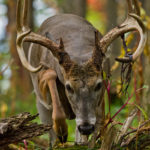
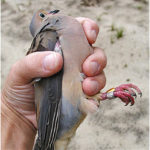
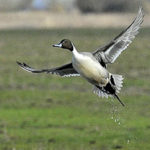
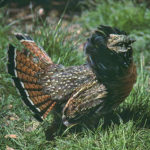

Be the first to comment